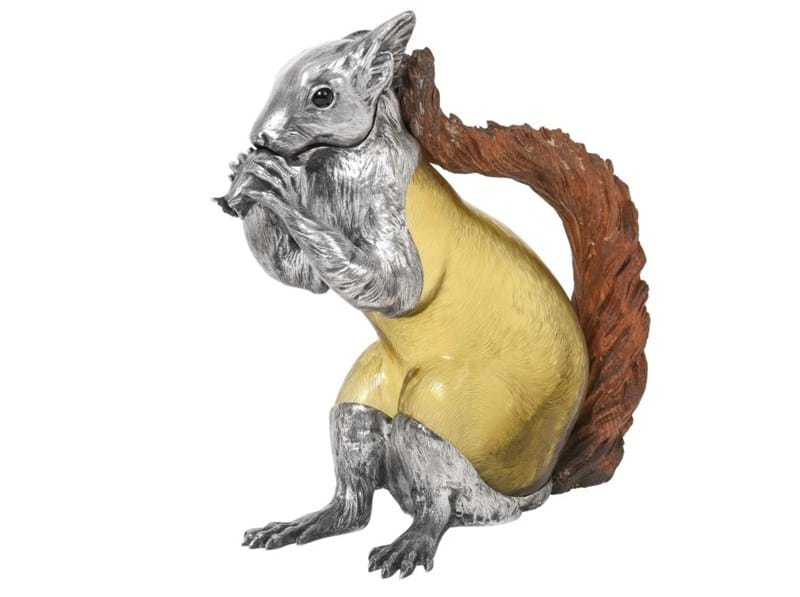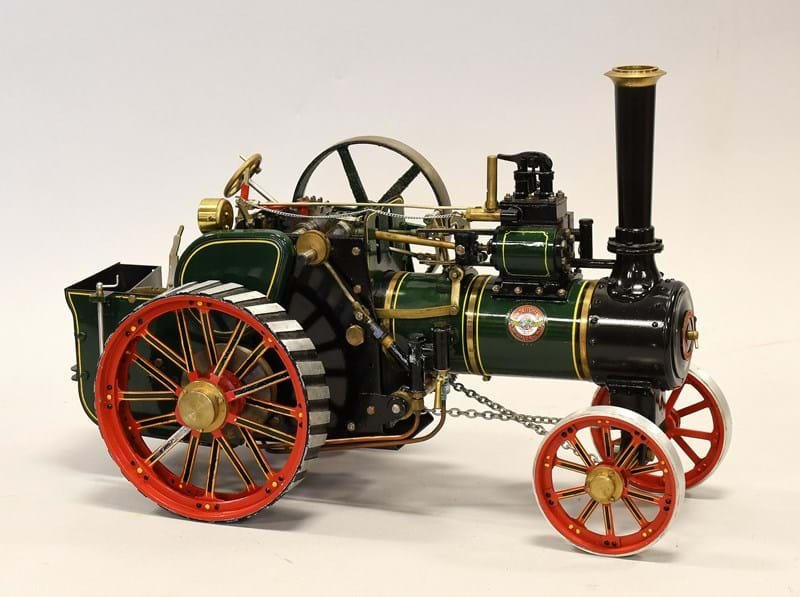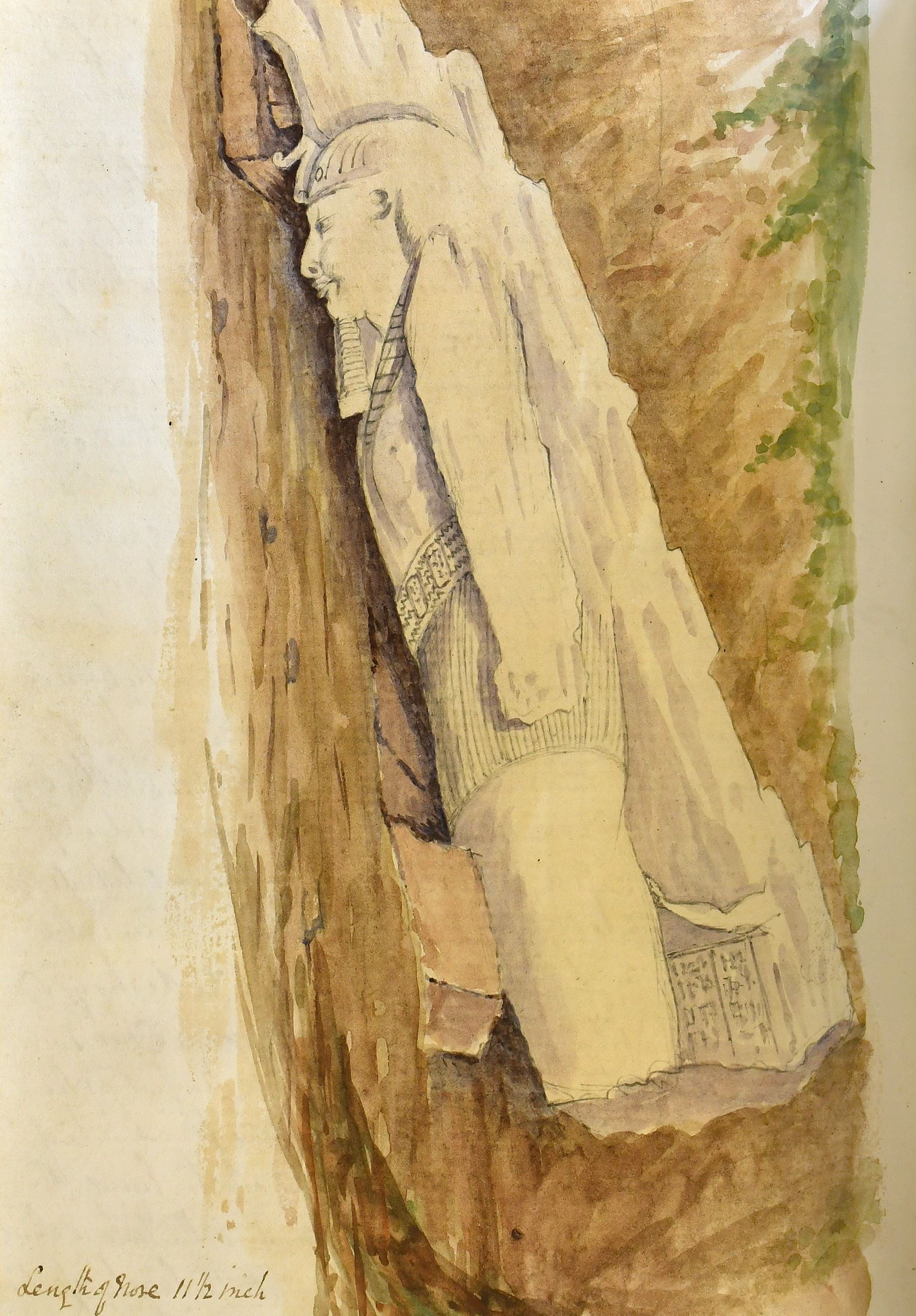An extraordinary Victorian Silver-Mounted Green or Amber Glass Claret-Jug in the Form of a Squirrel is one of the rarest lots coming up in the Jewellery, Watches and Silver Sale on 17th May (estimate: £5,000-8,000 plus buyer’s premium). This charming piece was made in 1882 by Alexander Crichton, a Scottish silversmith who found fame creating novelty silver items such as this. He is believed to have been born in Edinburgh to a family with close connection to the silver industry, but was to make his career in London where he is recorded as winning a £25 prize from the Goldsmiths’ Company for ‘presentations for designs, etc.’ (as recorded in the Art Journal, 1870 and quoted by J. Culme, The Directory of Gold and Silversmiths, Jewellers and Allied Traders 1838-1914, Woodbridge, 1996, vol. I, p. 102.). Although he is known to have made interesting items throughout the 1870s, it must certainly be his whimsical novelty silver-mounted claret-jugs and scent-bottles that are his most famous legacy. By the time he started to imagine and produce these zoomorphic items, Crichton was in partnership with fellow silversmith Charles John Curry, trading as Crichton & Curry ‘designers, modellers and silversmiths’ at Rathbone Place, Oxford Street, London.

The production of these claret-jugs was to be very short lived as the demand for them collapsed in the early years of the 1880s following a financial downturn, thus most of the known extant examples date to 1881 or, like the present example, 1882. Only 34 different forms have been recorded by J. B. Hawkins in his online article "Alexander Crichton - Through the Drinking Glass". Hawkins notes that most of the designs are registered with the Patent Office, however, the squirrel is not.
The squirrel must rate as amongst the rarest form of these zoomorphic claret-jugs, with Hawkins noting only two examples, one with a silver tail that was previously owned by the HM Queen Elizabeth, the Queen Mother (Hawkins, op cit., pl. 18) and the example sold at Sotheby’s, Belgravia in November 1977. While it seems most likely that the present examples and the one sold in 1977 are one and the same, unfortunately the vendor’s family records do not confirm where it was acquired. It is clear that the 1970s was a fruitful time in the development of the family’s collection, so it seems likely that they acquired the jug either directly at the Sotheby’s sale or through the trade not long after the sale.

Another fascinating lot in the sale is a George V Silver Copy of the Warwick Vase on a Silver-Mounted Ebonised Wood Plinth (estimate: £7,000-10,000 plus buyer’s premium).
The Warwick Vase, now in the Burrell Collection, Glasgow, was discovered in the late 18th century by Scottish art dealer Gavin Hamilton at Hadrian's Villa in Rome. The vase, which is decorated with Bacchanalian motifs, was found on the villa's extensive grounds that Hamilton had been permitted to excavate. It was in pieces when discovered and sold by Hamilton to Sir William Hamilton, British envoy at the court of Naples, and was passed down to his nephew George Greville, 2nd Earl of Warwick. The celebrated engraver Giovanni Battista Piranesi made two etchings of the vase once its restoration was complete and published these etchings in his 1778 publication Vasi, candelabri, cippi, sarcofagi, tripodi, lucerne, ed ornamenti antichi disegnati ed incisi dal Cav. Gio. Batt. Piranesi, (Vases, candelabra, gravestones, sarcophagi, tripods, lamps, and ornaments designed and etched by Cavalieri Giovanni Battista Piranesi) which will undoubtedly have added to the fame of the vase.

The Earl of Warwick had intended to sell the vase to the British Museum, but the sale never came to pass, so he kept it at Warwick Castle. It remained there until 1978, when it was sold to the Metropolitan Museum of Art, New York. However, before it could leave the country, it was declared to be of national importance and so an export license was denied, and the funds were instead raised for it to stay in the country. In the decades since it was discovered it was to prove a popular form for silversmiths to copy with many examples known from the beginning of the 19th century and through into the 20th century. Another example, which was just under half the weight of the present example and made by the Goldsmiths and Silversmiths, Co. Ltd. passed through Tennants in 2023, selling for £11,000 plus buyer’s premium.











